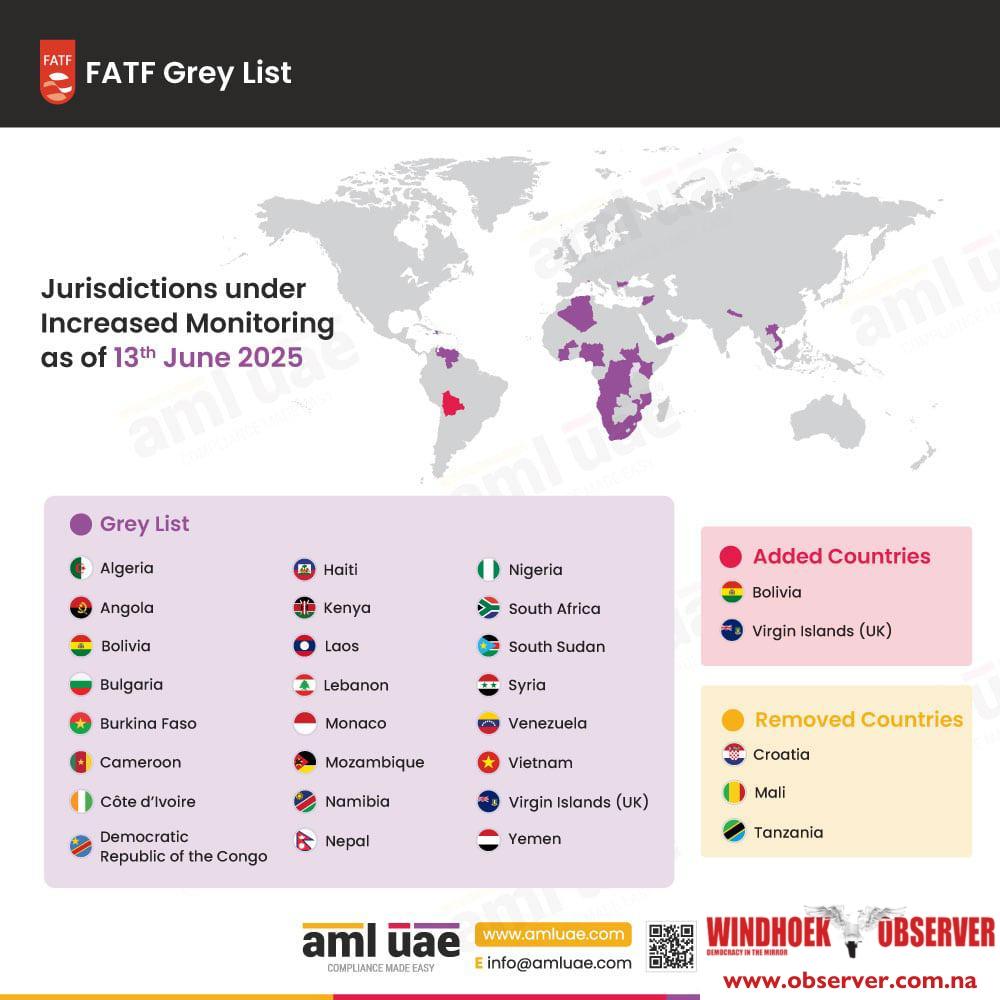Justicia Shipena
For Namibia to exit the Financial Action Task Force (FATF)’s grey list, it needs to address five remaining action items by May 2026.
This means the country has 11 months to address these action items and avoid remaining on the greylist.
On Friday, the Financial Intelligence Centre (FIC) announced that the country has made progress remediating eight out of the 13 strategic deficiencies identified by the FATF.
FIC director Bryan Eiseb said that the five remaining items include having fair and strong penalties for breaking AML/CFT rules, and better teamwork between the FIC and law enforcement to use financial intelligence more effectively in investigations.
These items also include a sustained increase in money laundering investigations and prosecutions, adequate resources to strengthen the capabilities of authorities, and the ability to identify and investigate terrorist financing activities.
“Namibia remains committed to enhancing the effectiveness of its national AML/CTF/CPF regime in a sustainable manner,” said Eiseb.
Namibia was grey-listed by the Financial Action Task Force (FATF) in February 2024 and placed under increased monitoring due to concerns about its ongoing shortcomings in effectively implementing international standards on Anti-Money Laundering (AML), Combating the Financing of Terrorism (CFT), and Combating Proliferation Financing (CPF).
Eiseb noted that the country’s improvements have been recognised by the FATF, which commended Namibia for its efforts at its plenary meeting in Strasbourg, France.
Namibia’s progress was marked by its submission of a second compulsory progress report to the FATF Africa Joint Group, which recommended the progress for adoption at the Plenary.
The country has now fully addressed eight of the deficiencies, meeting FATF’s expectations in implementing anti-money laundering, counter-terrorism financing, and counter-proliferation financing measures.
However, despite these advancements, Namibia was added to the European Union’s high-risk jurisdiction list on 10 June 2025, following standard EU practice of aligning its list with the FATF grey list.
This EU listing requires heightened vigilance by EU banks and financial institutions when dealing with Namibian entities, potentially increasing compliance requirements and transactional costs.
However, the EU listing does not undo Namibia’s progress, said Eiseb.
“Namibian entities and stakeholders are cautioned that this measure may cause increased compliance requirements and potentially impact transactional costs. The FIC, as national coordinator of efforts to address the action items, is poised and ready to ensure Namibia’s speedy exit from the FATF greylist, of which efforts are supported nationally and are being conducted with the support of various international technical assistance partners,” he stressed.
The Business and Intellectual Property Authority (BIPA) last year began working on beneficial ownership.
Just before being grey-listed, in September 2023, Namibia implemented a series of legal reforms aimed at preventing greylisting.
Parliament amended nine laws, repealed two, and introduced two new ones. These actions followed a 2022 peer review and mutual evaluation conducted by the Eastern and Southern African Anti-Money Laundering Group (ESAAMLG) under the Financial Action Task Force (FATF) framework.





